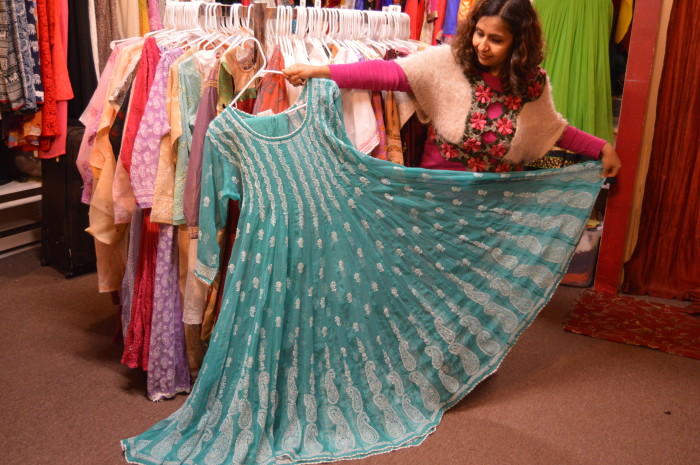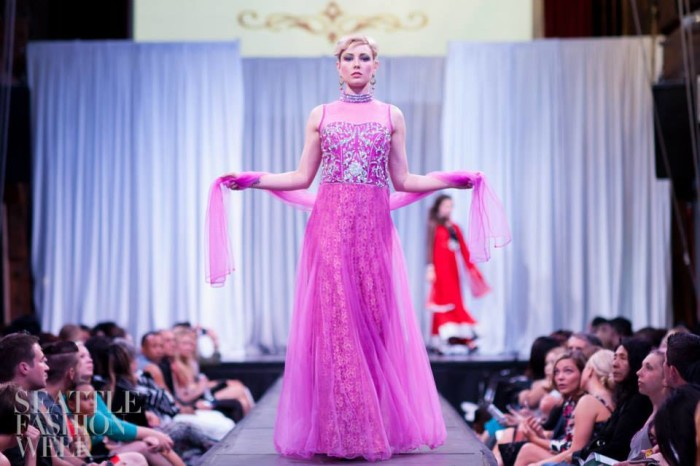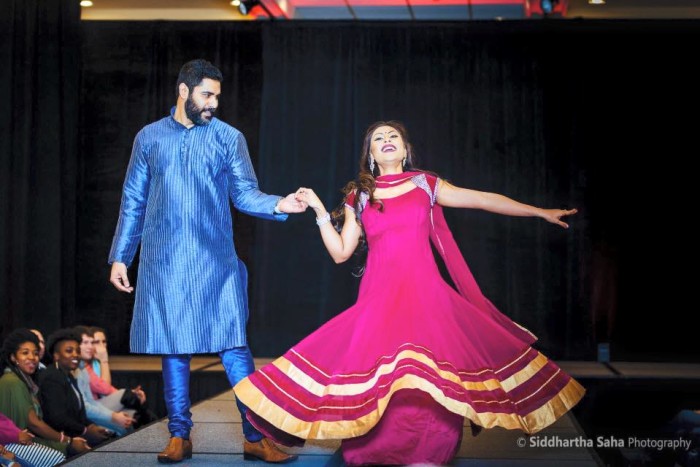
The growing popularity of Bollywood culture and weddings has helped bridge the cultural gap and bring Indian fashion into the American mainstream.
But a non-Indian woman wearing a colorful sari on the streets of Seattle would still probably turn heads — and it might draw criticism that she’s misappropriating Indian culture and clothing.
Behind a bright pink storefront in the heart of Redmond is a small business that’s trying to change that.
Ravishing Marketplace is filled with colorful fabrics, jewelry and other South Asian fashion treasures. Designer and owner Menka Soni has created an small empire that strives to crossover Indian fashion into western culture in a tasteful way.
“I wanted to prepare a blend of Indian and western culture together and come up with some of the outfits that go with the western culture here, yet they have Indian roots,” Soni said.
Soni grew up in Lucknow India. She quit her job in IT in 2010 to pursue her dreams of fashion and women’s empowerment, and opened Ravishing Marketplace, despite having no formal training in fashion design. A self-proclaimed “model maker” she is also the Washington state director of Mrs., Teen and Miss India Pagents, in which she helps young Indian girls pursue their dreams in modeling and acting.

Ravishing Marketplace sells a variety of Indian fashions including customizable dresses, silk work, cotton pants and skirts, scarves, children’s costumes and cover-ups. Much of the clothing features Chikan work, an embroidery technique from Lucknow that originated during the Mongol empire. The store also has a lot of Aari work, a painted fabric with embroidery.
Soni is the head designer, and all of her designs are handmade by women in India who she says she works with closely to promote their craft. Her designs are sold both in Seattle and India.
She refers to her style as “Indo-western” and says she’s committed to bridging the gap between western and Indian styles. She says her goal is to eventually have Indian fashions worn by everyone.
With accusations of cultural appropriation so common in fashion lately, I decided to ask a couple of my Indian American friends how they feel about the crossover of Indian fashion into western culture.
“I really love the Indian culture and our values,” said Ravina Gogna, 21, who is a political science major at UW. “We are one of very few cultures remaining that have such a distinct way of dressing, so to see it spread throughout the world is exciting.”

But that doesn’t mean there should be a free-for-all of non-Indians thoughtlessly donning henna, bindis and saris in a culturally insensitive way.
“There is a huge difference in wearing these items out of the appreciation and understanding of the culture it represents, as opposed to wearing them for aesthetic purposes,” said Sesira Maganty, 21, who studies Public Health at UW.
Both Maganty and Gogna say they wear traditional Indian clothing like saris for family events, but don’t often incorporate them into their everyday wardrobe.
Gogna brought up an interesting double standard — that when Indian attire is worn by Indian people in the U.S., it can sometimes be perceived as backward or not modern, where the same outfit on a non-Indian person could be seen as trendy.
For Soni, her Indian-inspired fashions, worn by both Indians and non-Indians offer a solution to these conundrums.

“I think people have it in their mind that if they wear it and wear it in the wrong style they might be offending the people who wear this as their regular outfit,” she said. “So I want to bridge that gap, I want people to know very easily and very comfortably about each others outfits.”
Ravishing Designs has been featured in Seattle Fashion Week, Chance Fashion Show and the Northwest Women’s Show, among others. Since 2013 Soni has also puts on an annual fashion show called the Ravishing Women’s Show that she says is aimed to inspire, encourage and empower South Asian women by celebrating their culture.
“I’m not only representing clothing but trying to give a holistic approach to my fashion shows by highlighting a culture,” she said.


Great work soni! The way you are taking our culture to the heights is just awsome.
Wonderful Post !! All the styles are amazing. These styles are evergreen. I am sure these styles given an amazing look for me.